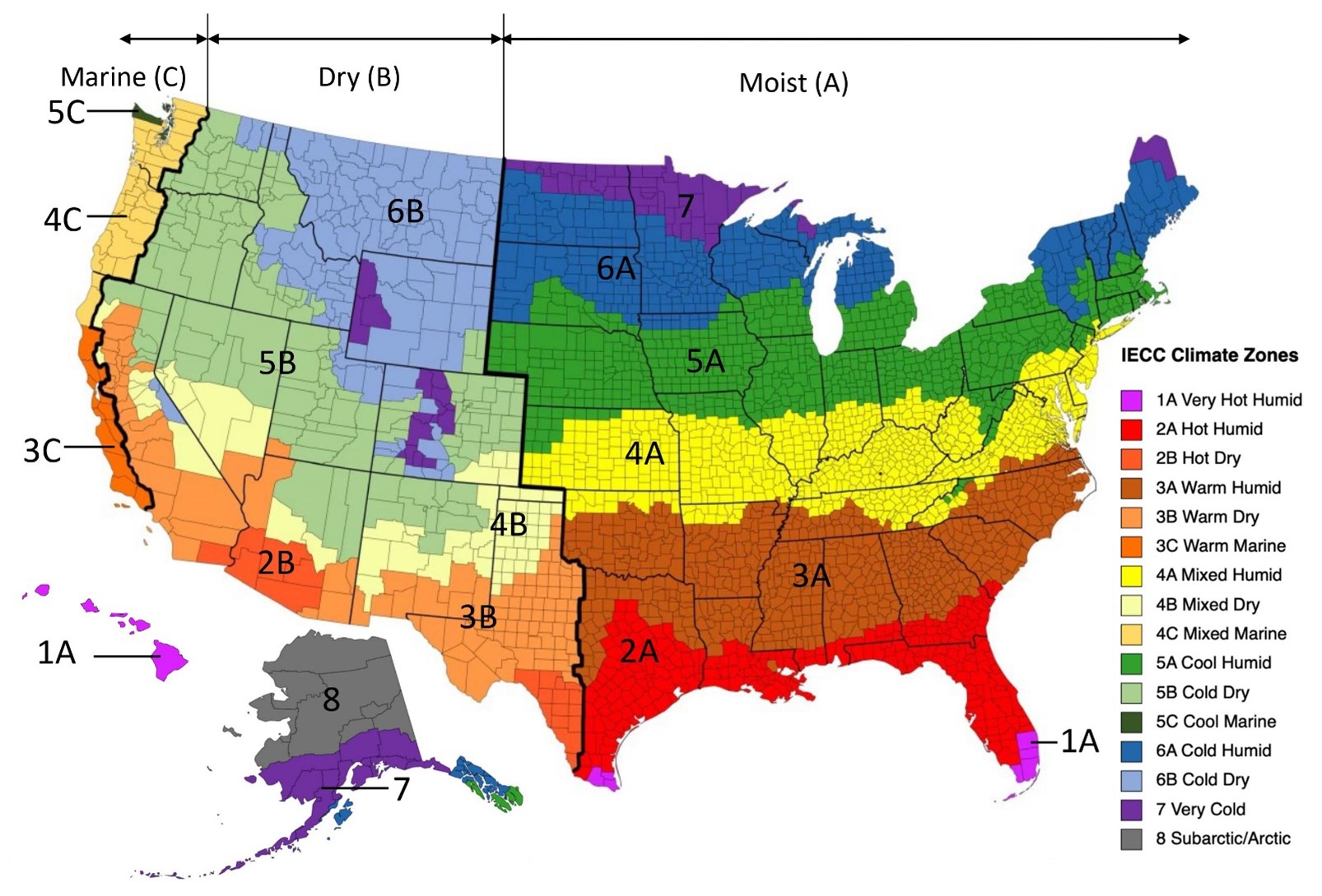
Choosing the Right Foam Insulation for Your Barndominium
When building a barndominium, choosing the right foam insulation is crucial to ensure energy efficiency and comfort. The type of foam insulation needed depends on your climate and specific application. This guide provides comprehensive advice on selecting the best foam insulation for different areas of your barndominium.
Determine Your Climate Region
Understanding your climate zone is the first step in selecting the appropriate foam insulation. The Department of Energy categorizes the U.S. into several climate regions:
- Hot – Humid: Zones 1, 2, part of 3
- Mixed – Humid: Part of zones 3 & 4
- Hot – Dry: Part of zones 2 & 3
- Mixed – Dry: Zone 4B
- Cold: Zones 5 & 6
- Very – Cold: Zone 7
- Subarctic: Zone 8
- Marine: Part of zones 3 & 4
Use resources like the Building America Guide to identify your specific climate zone.
Identifying Your Application
Once you know your climate zone, determine the specific applications for insulation within your barndominium. Each application may require different types of foam insulation.
Exterior Walls
- Foam Only: Closed cell foam is often used exclusively in wall cavities for high R-value and air sealing.
- Hybrid Insulation: A combination of closed cell foam for air sealing and another insulation type (e.g., fiberglass) for added thermal resistance.
- Below Grade: For walls below ground level, closed cell foam is recommended due to its moisture resistance.
- Mass Walls: For concrete or block walls, insulate either the exterior or interior with closed cell foam.
Basement and Crawl Spaces
- No Stud Walls: Use closed cell foam on the interior side of unvented spaces.
- Stud Walls – Foam Only: Apply closed cell foam between stud walls for optimal insulation.
- Stud Walls – Hybrid: Combine closed cell foam with another insulation type for additional thermal resistance.
Floors Over Open or Vented Spaces
- Foam Only: Closed cell foam is recommended for spraying the underside of floors above unconditioned spaces.
- Hybrid: A layer of closed cell foam followed by another insulation type can improve energy efficiency.
Interior Walls and Floors
- Sound Insulation: Open cell foam is ideal for interior walls and floors primarily used for sound reduction between heated spaces.
Additional Tips
- Vapor/Radon Barriers: Always install a qualified vapor or radon barrier over any exposed earth in basements and crawl spaces.
- Thickness and R-Value: Ensure the foam thickness meets or exceeds the recommended R-value for your climate zone as per the International Energy Conservation Code (IECC) 2009.
Selecting the right foam insulation for your barndominium involves understanding your climate region and the specific applications within your building. By following this guide, you can ensure optimal energy efficiency and comfort in your barndominium.
Insurance Policies
High value policies issued and maintained
States
We cover most states across America
Insurance Agents
Qualified with all relevant certification
Talk to an agent today
We are ready to hear your requests now
Available 24-7
CALL 844-967-5247 (844-WORK-247)
Send Us A Message
Ready to protect your contracting business with the right insurance? Fill out our lead capture form today for a personalized quote. Our team at contractorinsurance.io is dedicated to finding the best insurance solutions for contractors like you. Don’t leave your business exposed to unforeseen risks – secure it with a policy crafted to meet your specific needs. Get in touch now!


